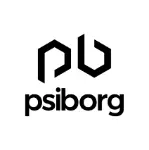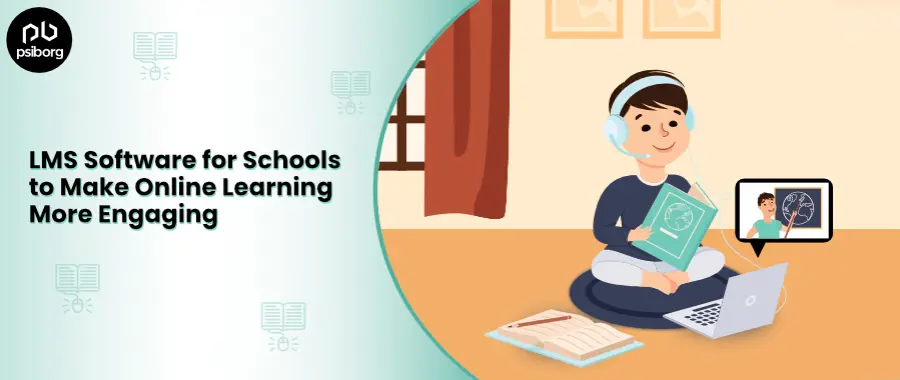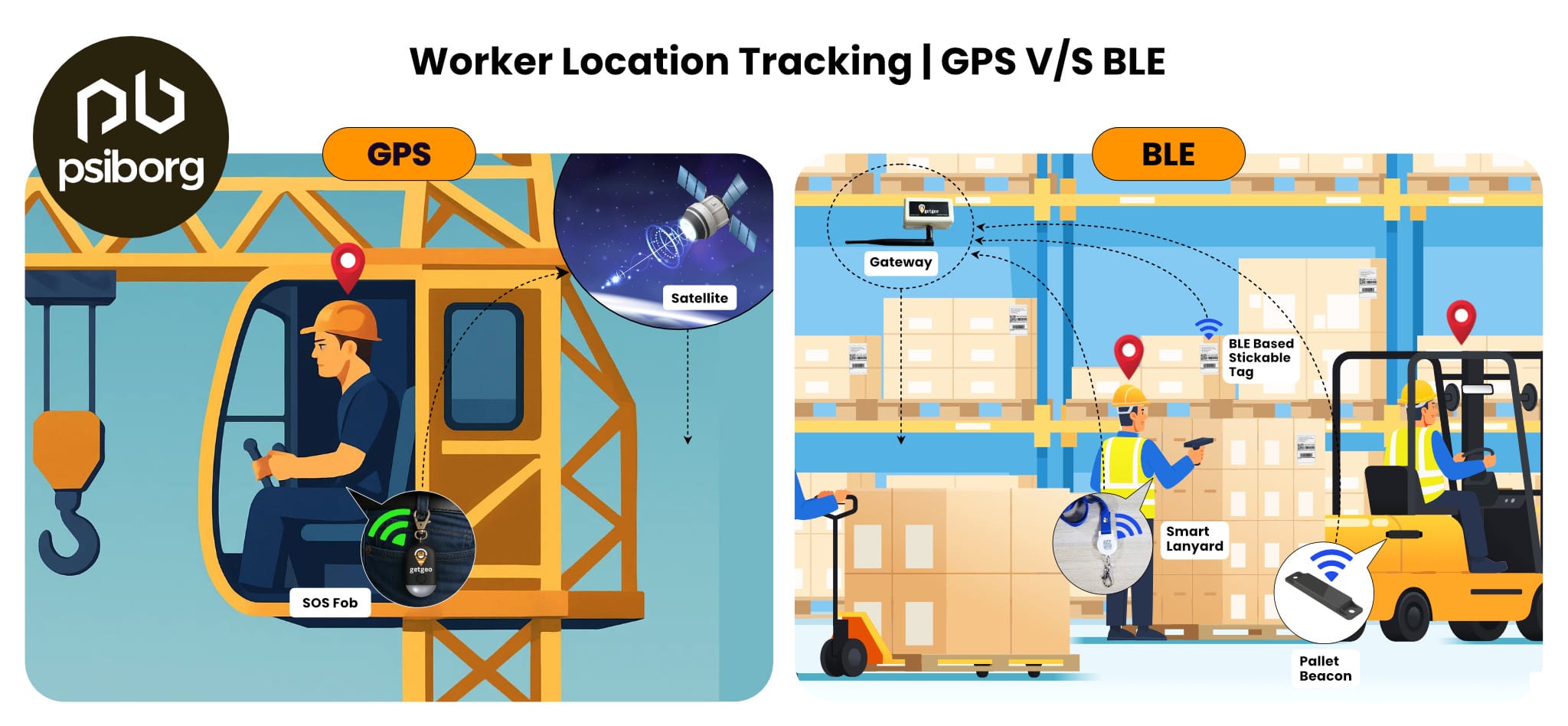PsiBorg develops Smart agriculture system with a motive of helping farmers in increasing yield, efficiency and releasing workload. Using sensors nodes with soil monitoring devices, we try to control the harsh conditions faced by farmers.
Smart Agriculture System
- Home
- Smart Agriculture System
Smart Agriculture Solutions
Smart agriculture means the use of IoT technology to increase agricultural yield, address farm issues, and make the entire farm more connected and intelligent. PsiBorg assists agricultural companies by developing smart agriculture systems that improve farm operations’ visibility and productivity while also providing accurate, actionable data for strategic decision-making. Solve your agricultural issues with PsiBorg’s IoT solutions.
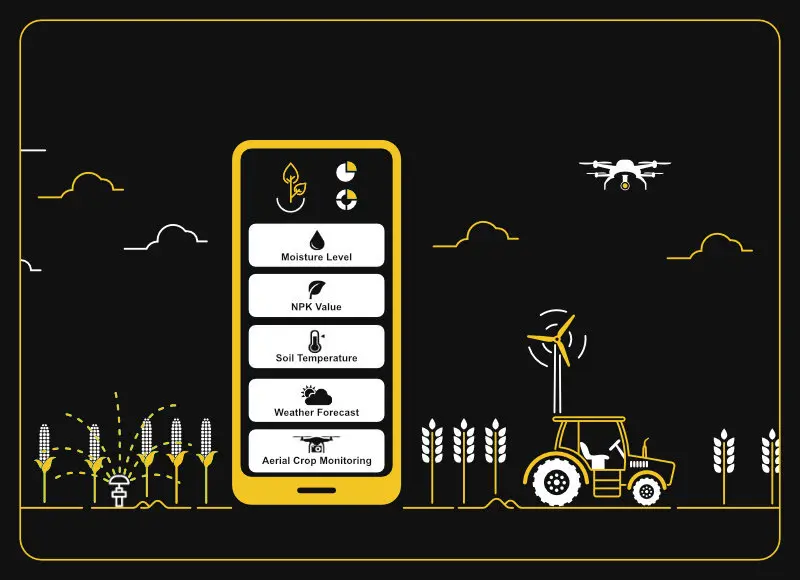
Smart Agriculture System Using IoT
IoT based smart agriculture monitoring helps in collecting data, starting from the weather conditions to the soil quality monitoring to the crop’s growth process. This information helps the farmer in understanding the need of their soil and helps in growing better yield. Smart farming solutions are developed by integrating technology with traditional farming methods. In addition, a smart irrigation system is used to automate irrigation process and Livestock tracking and geofencing can be used by Farm owners to collect data regarding the location, well-being, and health of their cattle.
Working of IoT Based Smart Farming
Smart farming techniques such as placing various sensors in agriculture land (such as environmental and soil sensors) to fetch soil nutrition data, PH, moisture level, temperature etc which is then edge computed at the central gateway. The sensor nodes generally use protocols like Sub-1GHz, LoRaWAN, Zigbee etc to communicate with the gateway. This data is further pushed to the server and can be visualised on Cloud based IoT dashboards and IoT Mobile application after analysis of data fetched.
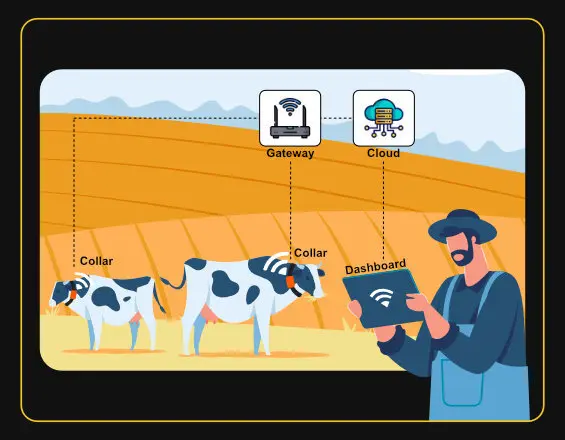

Need of Smart Farming Using IoT
With the growth in the world population, food consumption also grows rapidly. To meet the demand-supply ratio, change in the agriculture pattern is a necessity. IoT, with a combination of various sensors and actuators, can bring a change in modern Agriculture. Farmers can now increase the effectiveness of pesticides and fertilizers by measuring variation within the field remotely. With the right information and communication technology, IoT application in agriculture can empower farmers.
Analysis of Agricultural Data
Different algorithms along with analytical tools are implemented for IoT data analysis of agricultural fields for predictive maintenance. Also, to collect data from the field at any time of the day and keep an eye in the barn, satellite imagery and drone solutions are used in IoT based precision farming. It’s the combination of all these components that help the farmers examine the land at a more granular level and help in making decisions beforehand , also recommending the type of crop to grow with the integration of AI/ML in the system.
Smart Agriculture System by PsiBorg
Advanced agriculture in India as well as in countries like Indonesia, USA and others is already been implemented. We, at PsiBorg, have developed many Wireless Sensor Networks for different applications, Smart Agriculture System being one.
From Satellite Imagery to integrating various weather forecasting APIs with the system which includes soil monitoring probes and a central unit where all the data from the probes is collected. The sensors are fitted inside the probes at different levels and measure different parameters including moisture, humidity, water level, temperature, NPK values, pH values, CO2 content etc. This data is further sent to IoT Gateway System for storage and analysis.
Therefore, giving actionable insights such as soil health monitoring, plant counting and yield prediction and much more to manage all the operations on the farm, both pre and post harvest and can be monitored from anywhere in the world.

Interested? Let’s Get Started
STEP 1
Contact Us
Reach out to us via the contact form or give us a call to initiate the conversation about your IoT development needs.
STEP 2
Get Consultation
Schedule a consultation with our experts to discuss your project in detail, aligning our approach with your unique vision.
STEP 3
Get a Cost Estimate
Receive a detailed cost estimate tailored to your project’s scope and requirements, ensuring transparency in your investment.
STEP 4
Project Kickoff
Once finalized, we'll initiate the project kickoff, marking the beginning of our collaborative journey toward successful IoT product development.
Why Choose PsiBorg?
Ready to elevate your IoT devices with advanced hardware design solutions? Contact us today to discuss your project requirements and explore the possibilities.

Industry-Leading IoT Expertise
With almost a decade of rich experience in IoT technology, we provide tailored services to various industries. Our team strives to deliver innovative and effective solutions that guarantee brilliant connectivity and automation.

End-to-End IoT Solutions – From Concept to Deployment
From the initial idea to launching your IoT project and providing continuous support, we take care of it all. You can completely focus on your business while we ensure a hassle-free experience for our clients.

Secure and Scalable Architecture
We guarantee you scalable, reliable and future-proof solutions. They are designed to provide operational efficiency, strong security, reduce downtime and align with your evolving needs.
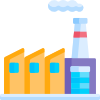
Customized IoT Solutions for Diverse Industries
Trust us to offer tailored IoT applications that perfectly align with your specific industry requirements and deliver smart, efficient, and cost-effective solutions.
Our Process
1
Planning
PsiBorg starts any IoT development phase with planning. Firstly, the team experts strategically outline the scope and objectives of the solution and accordingly decide on resource allocation. The planning phase is the foundation of successful IoT solution development.
2
Analysis
After planning comes the requirement analysis stage, where the main objective is understanding the end user's needs and requirements. Our tech team gathers detailed insights to decide the flow of the development.
3
Design
In the design phase, a detailed blueprint of the project is created to clearly define the system’s architecture, data structure, and interfaces. In IoT solution development, the designing phase is also accompanied by prototyping, to validate the expected outcomes.
4
Implementation
In the implementation stage, the actual concept and product prototyping take place. The PsiBorg team, at this stage, initiates the MVP for the IoT solution. The implementation stage includes the development of all the hardware, firmware, and software. After implementation, the system undergoes integration and testing.
5
Testing & Integration
The testing stage is part of the development process because testing of the final product is necessary. Our team checks and thoroughly tests everything- hardware, firmware, and software. After conducting unit testing and validating the system, we deploy the project for production.
6
Maintenance
The final stage involves maintenance and support of the deployed solution. In the maintenance phase, PsiBorg offers to address waves, do updates, and provide ongoing assistance to the users.
Got problem worth solving or some amazing idea? Share with us!
Once you let us know your requirement, our technical expert will schedule a call and discuss your idea in detail post sign of an NDA.
All information will be kept confidential.
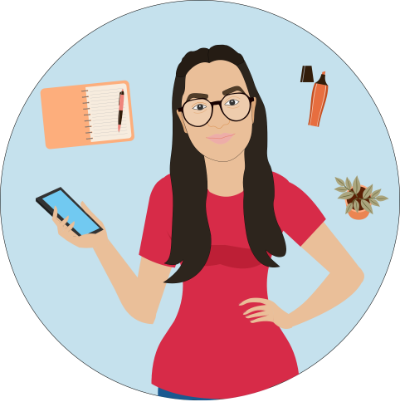
Speak with an expert
- Get help evaluating if PsiBorg is right partner for you
- Get information on IoT Solution and pricing
- Get a demo of how IoT can help with your use case
IoT Development Solutions for Every Industry
As one of the IoT product development companies, we deliver IoT products that are designed for performance, security, and longevity.

Automotive Industry: Manpower and Asset Tracking
For monitoring workforce productivity and efficiently managing valuable assets in the automotive sector, we build reliable IoT-based tracking solutions.

Mining Industry: Deployed Temperature and Humidity Monitoring
Our highly efficient IoT solutions help mining companies learn about the environmental conditions, ensure safety and comply with industry regulations.

Defence: Deployed Shipment Tracking Solution
To provide security and reliability in the defense sector, we provide real-time tracking solutions that help closely monitor the movement of all critical shipments.

Research and Development Sector: Cattle Health Monitoring System
Researchers and farmers can track cattle health, improve productivity and detect diseases early with our IoT-enabled livestock monitoring systems.

Consumer Electronics: SoS and Emergency Devices
Our IoT app development company provides efficient SoS and emergency devices that help in monitoring emergencies in real time and ensure quick responses and better safety.
Case Studies
The true success of a business lies in the trust and partnership cultivated between clients and the company. Click to read about some of our proudest achievements.
Frequently Asked Question
IoT in agriculture is empowering farmers in several ways, including precise forecasting, data-driven decision making, need of their soil and more. Technological change has been the basis for increasing agricultural productivity and promoting agricultural development.Yes adaption of Iot in agriculture is the future of farming.
IoT smart farming solutions is a system that is built for monitoring the crops, Soil of the field with the help of sensors (Soil nutrition sensors,light, humidity, temperature, soil moisture etc.) and automating the irrigation system. The farmers can monitor the field conditions from anywhere and can take more informed decisions based on AI/ML algorithms.
Smart farming is highly efficient when compared with the conventional approach. Farmers can now monitor the crops remotely and can make more informed decisions to increase crop productivity .Usage of fertilizer and pesticides can be controlled,irrigation of soil can be done more efficiently based on the output of the sensors, which in turn keeps the food prices down.
Along with sensor probes encapsulating different sensors for soil monitoring, a central gateway unit is required. A central gateway is internet enabled (in most cases), which further sends the data to the IoT cloud, from where the data can be fetched on our phones and laptops. So, basically infrastructure for smart farming includes sensor probes, gateway unit, IoT cloud and Smart phones .
Real time Monitoring and control systems, Livestock monitoring ,smart irrigation system ,effective use of water, fertilizers and pesticides are some of the applications of Smart agriculture.
Infrastructure cost, lack of technical knowledge among farmers in developing countries, continuos internet connectivity, requirement of long lasting batteries are few of the challenges faced by smart agriculture system.
Without proper cybersecurity on the IoT interfaces for the physical devices and sensors precision agriculture uses, data could be easily lost or stolen, So it is very important to configure things like data encryption, remote wipe, password customization, two-factor authentication, backups, VPN, malware removal, updated firmware along with strong architecture to keep the system secure.
